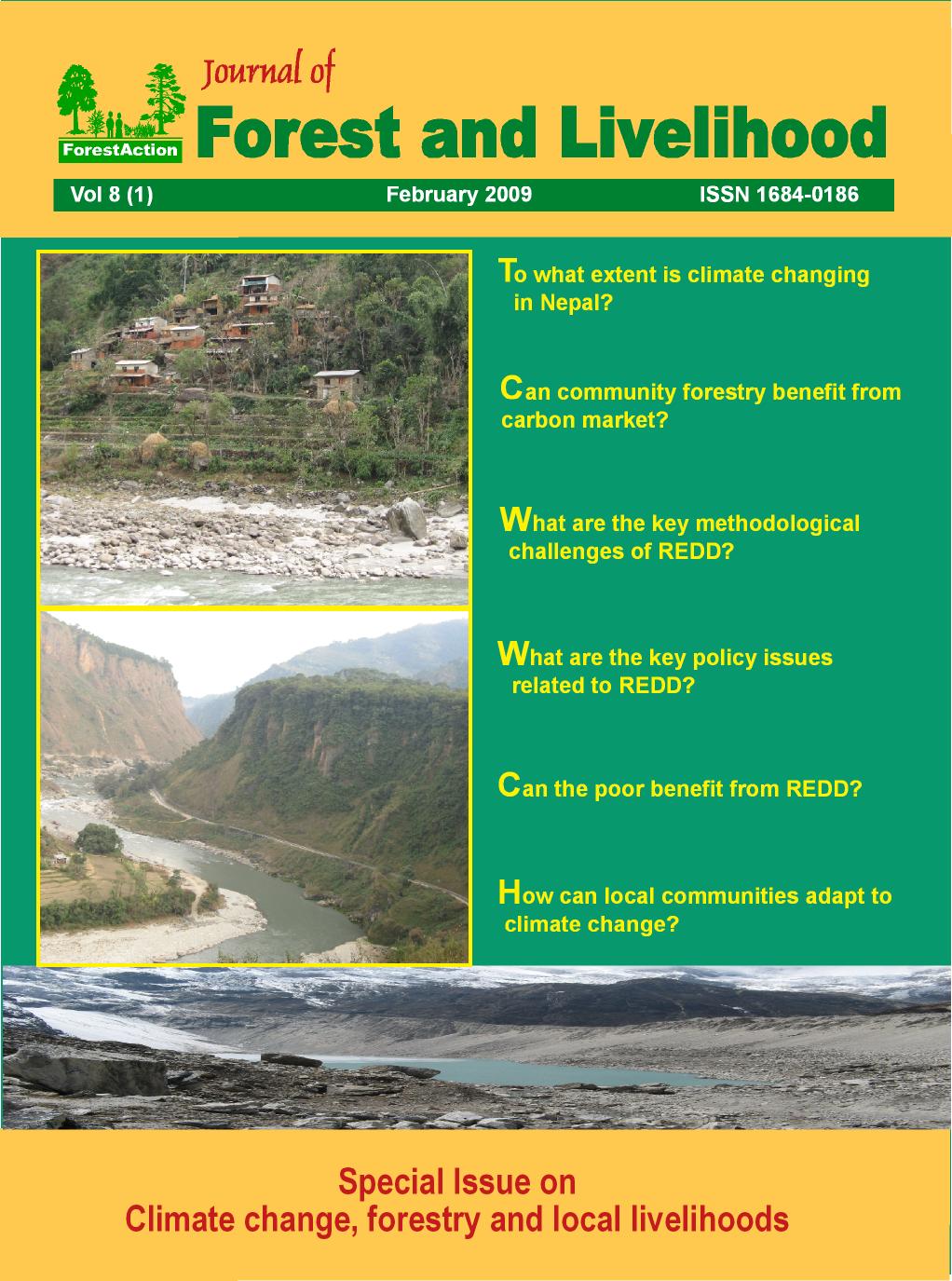Carbon Ownership in Community Managed Forests
Keywords:
CDM, deforestation, carbon credit, community forests, community forest users groupAbstract
In Nepal, the community forestry programme was introduced in the late 1970s with a dual objective: to improve forest management and to alleviate poverty. It resulted in a reduction in the rate of deforestation and an increase in biomass levels of existing forested areas. An added benefit was an increase in the rate of carbon dioxide sequestration from the atmosphere, helping to mitigate climate change. This valuable ecosystem service has not been recognized under the Clean Development Mechanism (CDM) of the Kyoto Protocol2, which is the main vehicle by which carbon reductions in developing countries may be financed by Northern countries. If carbon trading is to succeed as an incentive for sustainable forest management, there has to be some guarantee that forest?dependent communities will receive financial compensation for their carbon sequestration services. This article discusses these ownership issues in general and the position of communities within the Forest Act 1993 of Nepal in particular.
Key words: CDM, deforestation, carbon credit, community forests, community forest users group
Full text is available at the ForestAction website
Journal of Forest and Livelihood 8(1) February 2009 pp.77-83
Downloads
Published
How to Cite
Issue
Section
License
CC-BY-NC: This license allows reusers to distribute, remix, adapt, and build upon the material in any medium or format for noncommercial purposes only, and only so long as attribution is given to the creator.





